Bernie Leahy’s artworks combine techniques from all areas of art, bonded together with a love of life drawing. She makes use of a wide range of materials and processes including stitch, paint, bronze, plaster, gold leaf, diamonds, glass, text, silver, video and sound.
Bernie explores themes of connectivity, passion and protection. She layers fragments of the human figure, creating an emotional response from the viewer.
Her work is held in private and public collections in the UK, USA and Ireland. Bernie has exhibited widely at home in Ireland and internationally, including SOFA Chicago and SOFA New York (Sculpture Objects Functional Art and Design). She has represented Ireland twice in the International Fiber Art Biennales, In Philadelphia and in Venezuela.
In 2007, she was presented to Irish President McAleese for her contribution to Irish Craftsmanship. Bernie is a Member of the Design and Crafts Council Ireland (DCCoI) Portfolio for Fine Craft. Her Mid-career solo exhibition ‘Why Are We’ opened on 10th September 2018 at the Irish Arts Center, Manhattan, New York.
She works from her studio in North County Dublin, Ireland and is currently pursuing an MA in Art, Research and Collaboration at Dún Laoghaire Institute of Art, Design and Technology, Dublin. Following this she hopes to continue her studies by conducting research for a PhD in materials exploration.
In this interview, we discover how she started by creating stitched line drawings with an energetic flow and movement. Her love of the human form and life drawing has guided her career throughout. After many years of producing monochrome imagery, she has started to experiment with colour in paint and stitch, introducing a new dimension to her work.
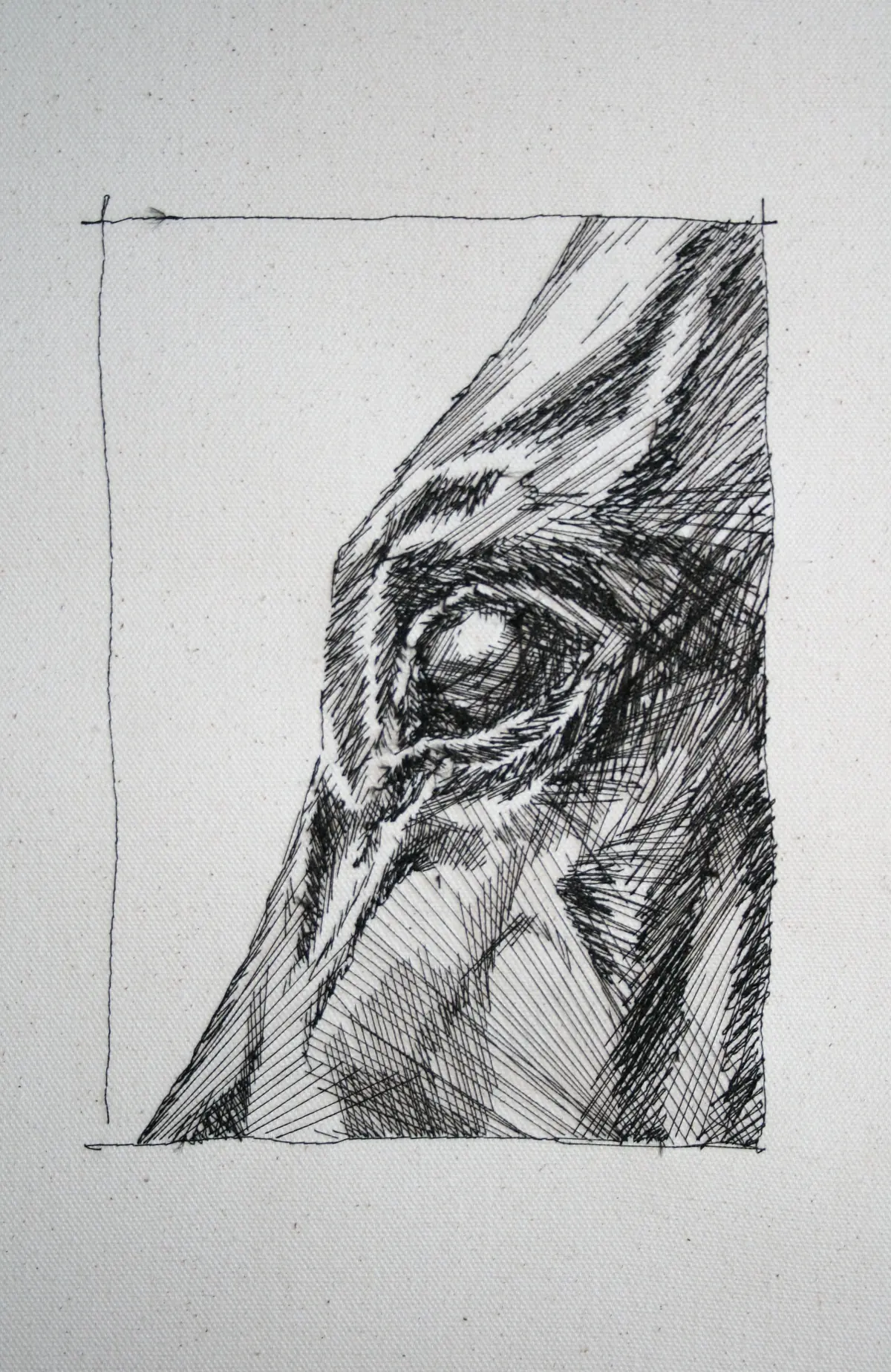
Using black thread to make line drawings of the human figure
TextileArtist.org: What initially attracted you to textiles as a medium? How was your imagination captured?
Bernie Leahy: My primary interest has always been drawing as a final interpretation, not as a preparation or illustration.
My background is in design and I have a postgraduate qualification in visual art education. This course required immersion in so many different disciplines and materials, of which textiles was just one part. It was shortly after this that I started to explore drawing in stitch.
When I first started, I set myself a personal challenge to draw using thread as a physical line. It intrigued me to try to make a drawing by physically moving around and manipulating the thread line with my hands. I set myself the limitation of using only black thread with no sketched guidelines marked on the canvas.
Very soon I became interested in the interplay of light and the conversations between the threads where they crossed. I explored how they created their own types of marks which contributed to form and volume.
Stitching is not the same as using a pen or pencil. In some ways it is simpler as fewer marks are needed, otherwise, it can become clunky and without soul. If you want a stitched drawing to have clarity and movement it invariably needs to be minimalist and uncluttered.
I started making these first black stitched drawings around 2002. I set up my website at the same time and hunted online for a genre to describe my work, I could not find any other portrait drawings stitched in black thread. Everything I saw was colourful and very decorative, which didn’t interest me. I came up with the phrase ‘stitched drawings’ to describe my work.
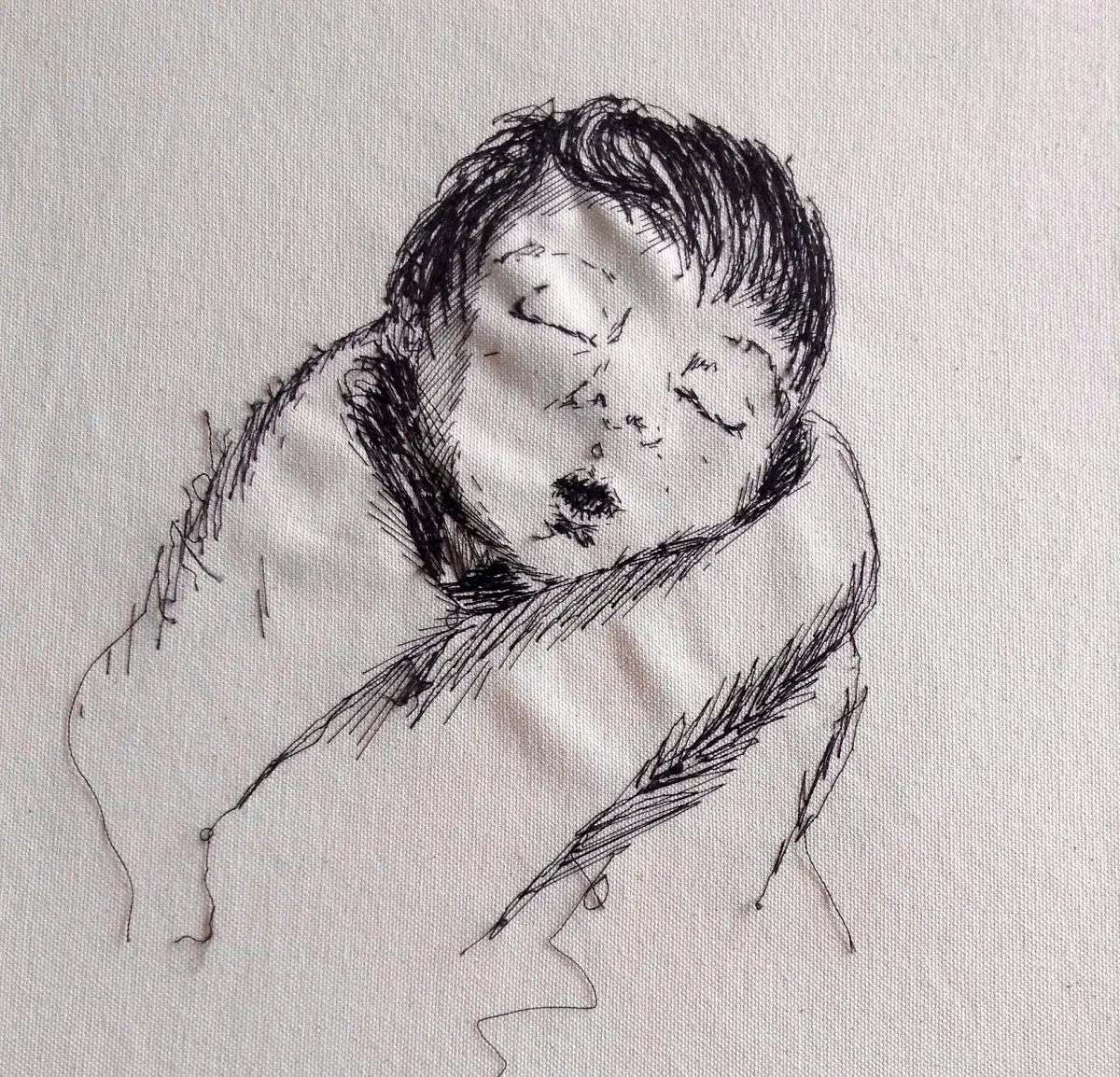
Who have been your major influences and why?
I love works by Caravaggio, Ingres, Picasso’s line drawings and prints, Egon Schiele’s drawings, Stanley Spencer’s portraits, Lucian Freud and many more! All of these artists have interesting subject matter and excellent use of light and quality of line.
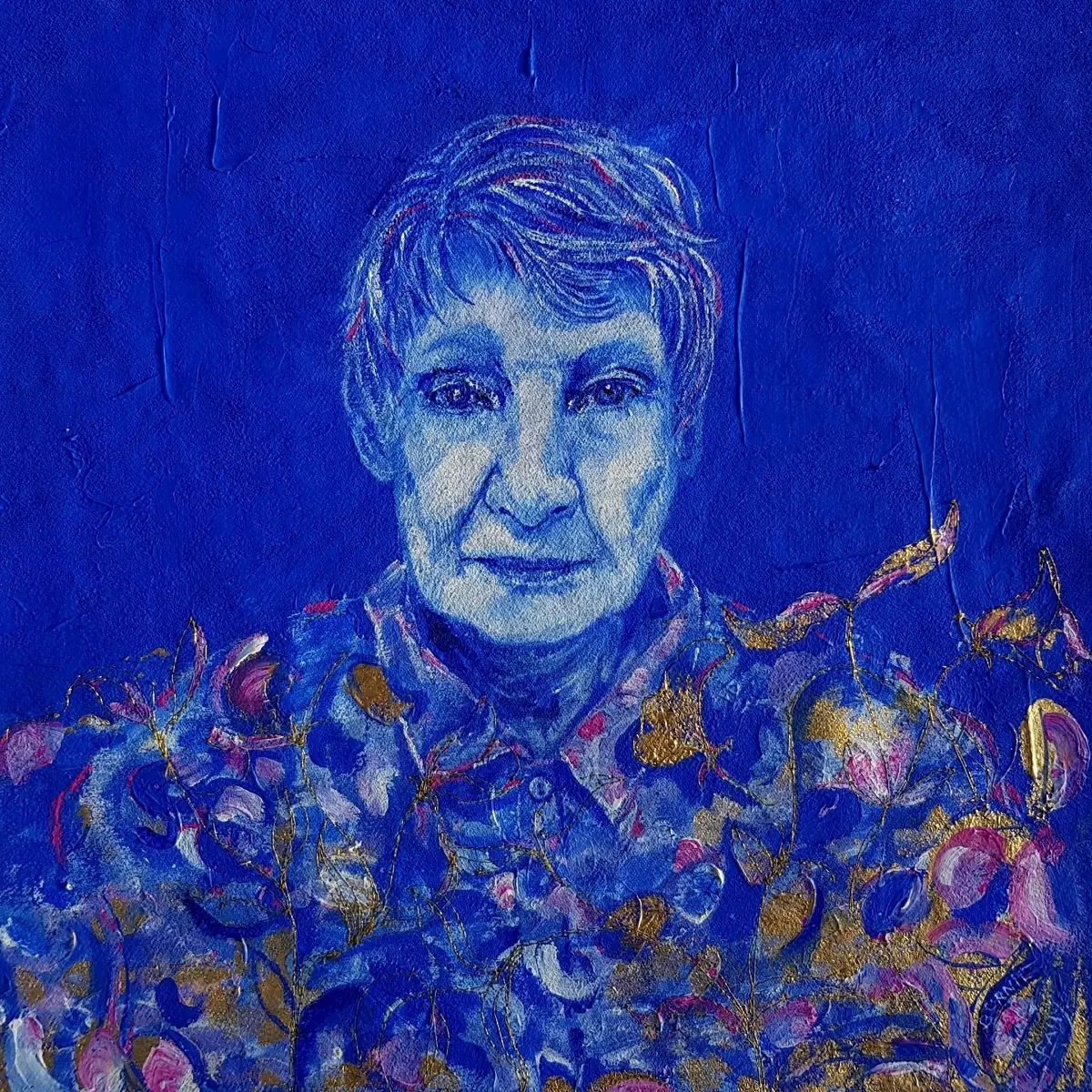
Layering and cropping human figures into stitched compositions
Tell us about your process from conception to creation
My drawings evolve in tandem with my development of subject ideas. My works are mostly related to human form. They also examine parts of myself, my connections with others and my journey through the world around me.
It’s my way of examining what life is all about.
I am always influenced by exhibitions and the places I visit. For example, my series of small sculptures from 2017 (plaster, glass, gold leaf, stitch) sprung from spending time in Athens, where I drew the beautiful Cycladic figures and found a connection to my own drawings.
My choice of material also contributes to my final visual decisions. Often the material dictates what the final form will be, but occasionally it is the concept that dictates what the materials will be.
With my colour portrait artworks, I split my thought process in two. I focus on layering painted shapes and then add the thread element to pull the final form into sharper focus. I use a mixture of broad marks interacting with the linear elements.
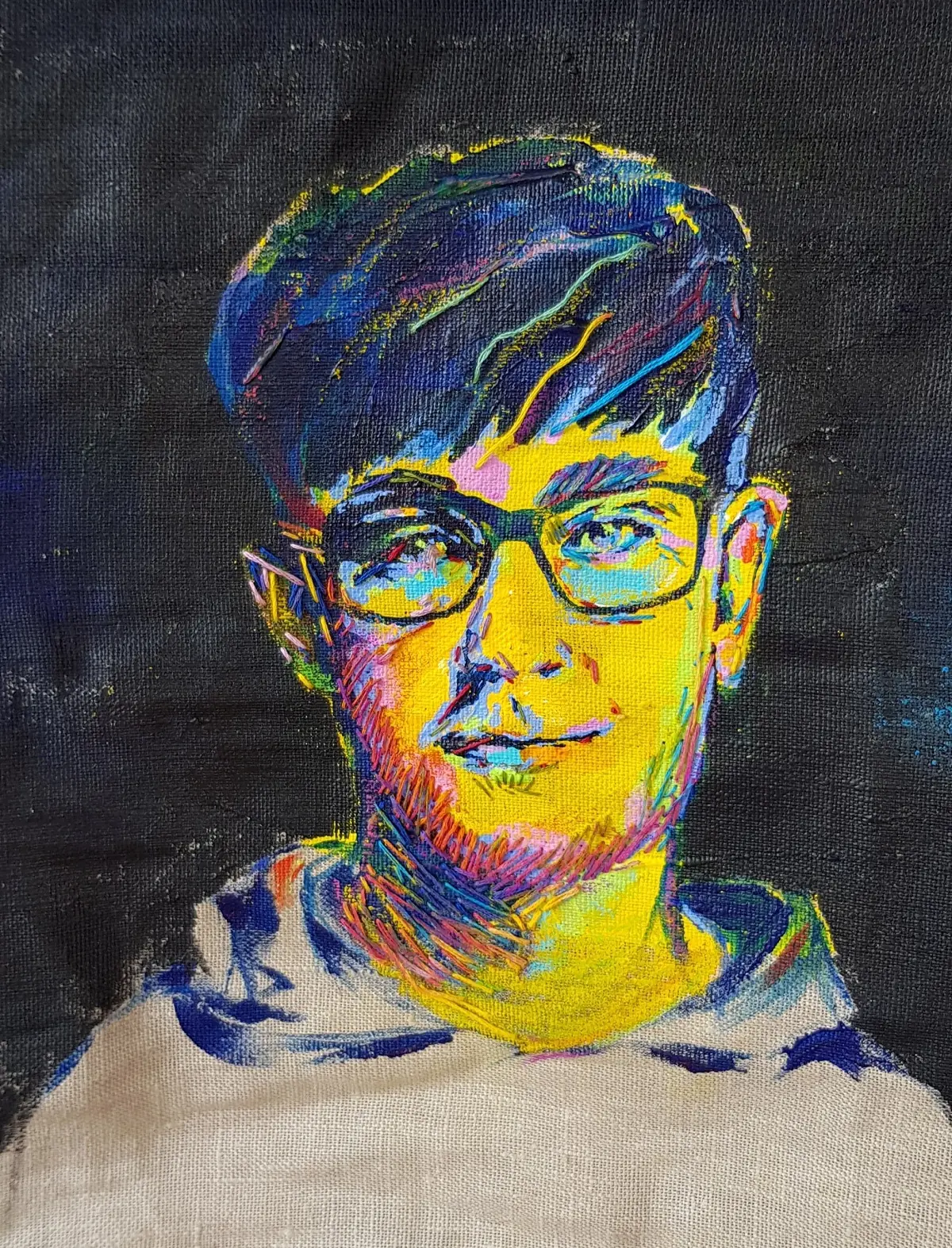
Tell us a bit about your chosen techniques and how you use them
Drawing is central to my process. In particular, I love to sketch the human form.
I draw from live models and over the years I have set up numerous life drawing groups. It is a great way to have ongoing access to models and there are always artists who are delighted to join the groups. My current group, North Dublin Life Drawing, is being moderated by some of the other artists when I am not available. There’s also a great group in Malahide, Co Dublin.
I produce hundreds of drawings of the human figure every few months. Back in the studio, I use these for reference, often layering or cropping them.
Studies of family members have always formed a part of this process, too. I often cast their body parts to give deeper meaning to the finished piece.
For me, the composition is the most important element. I spend a long time exploring all of the compositional elements. I marry the drawings, materials and concepts at this stage of my planning. Even if I think my plan is set at that point, the artwork tends to take on a life of its own.
I work on many pieces concurrently, often as many as ten at a time! I hang them around my studio while I continue onto the next piece. Each piece is made over a period of weeks or months.
Having them hanging in the studio helps me to see what I need to do to complete them. Perhaps something needs to be ripped out or a detail added. It is important for me not to overthink and I like to go with my gut feeling. I have to be brave about ripping up or painting over stitched parts.
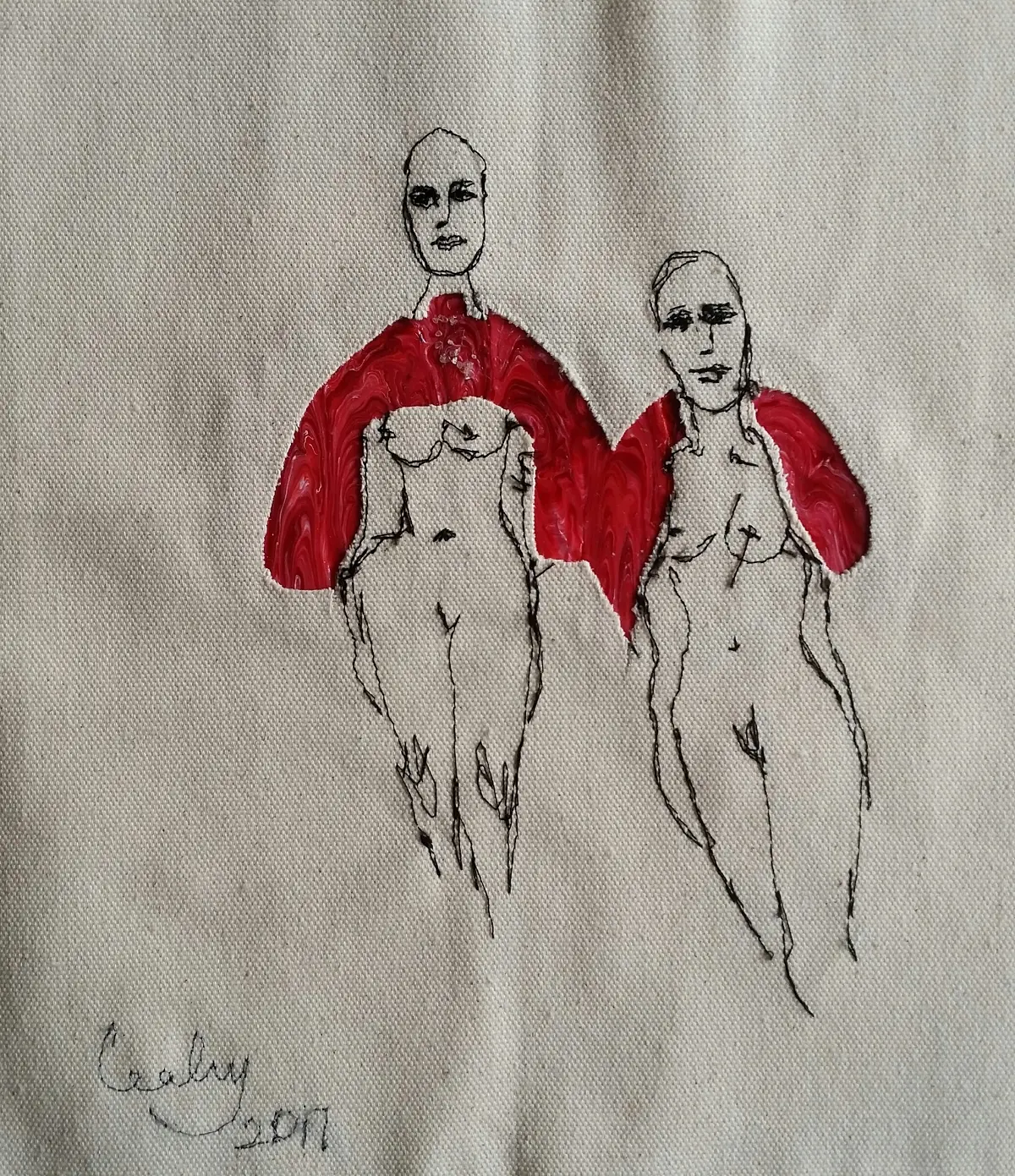
How do you use these techniques in conjunction with stitching?
My works start with my preparation sketches and life studies. It would be futile just to replicate my studies of the human figure, so I use them to guide me. However, I often exhibit and sell these life drawings as artworks in their own right.
At the start of making a stitched artwork, I map out the basic proportions of the figure or face, with stitched lines on the unmarked canvas. This allows movement and freedom of composition.
Then I add detail and remove it, deconstructing it. I repeat this many times. When developing each piece, I experiment by changing the types of stitches to see how they interact with each other and the base fabric (usually canvas or linen) and how they affected by light and shadow.
Sometimes, cutting a piece up or stitching another drawing on top works best. I try to keep the stitch lines as uncluttered as possible as I feel this adds to the thrust and movement, providing energy to the artwork. I try to jolt myself out of over-thinking each piece and trust my gut instinct if I am getting picky about a particular artwork.
With colour decisions, I try not to rely too heavily on obvious colour science solutions. I like to play with delicious limes and pinks and I am always surprised by the effects of the next layer of colour.
The scale of my work varies from miniature to very large pieces. Average sized pieces take forty to sixty hours of work.
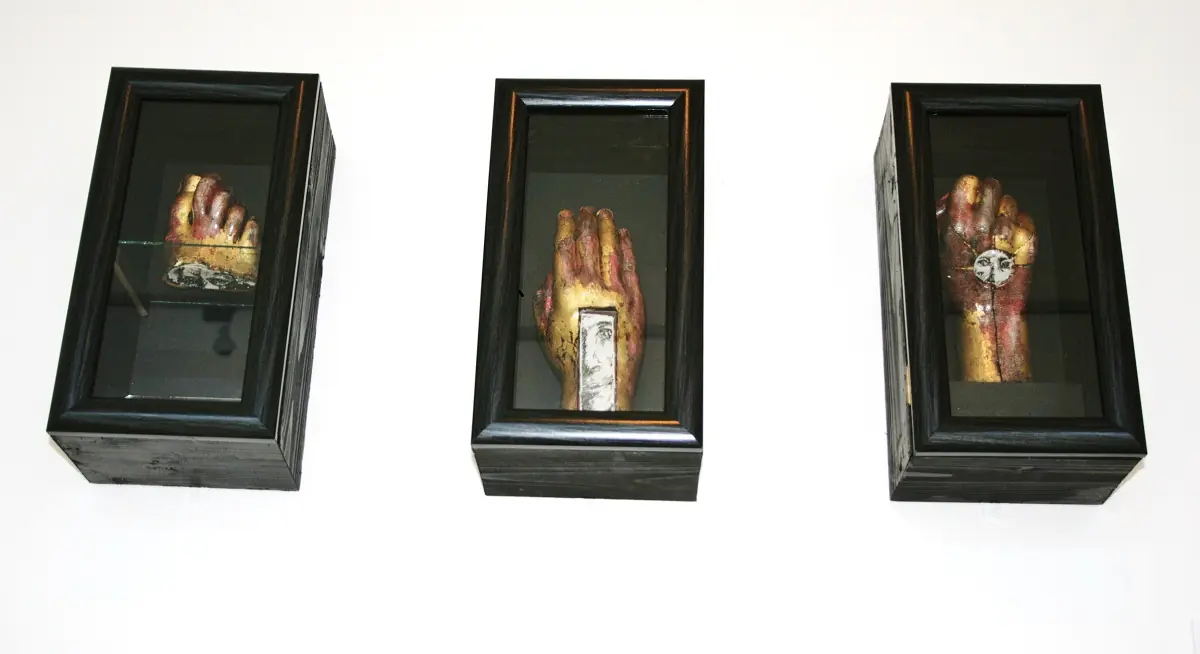
Eliciting a strong emotional response through use of the human form
Tell us about a piece of your work that holds particularly fond memories and why?
‘The Hope Artefacts’ are a series of three small sculptures wall-mounted in tiny glass cabinets. They were made for the Narrative Line exhibition (2010) with Alice Kettle in the National Craft Gallery, Kilkenny. They were heavily inspired by Catholic relics and the hope that we take from such objects. They touch a nerve, I’m told!
These pieces combined the cast hands and feet of my son with inserted miniature stitched drawings of fragments of my grandparents. Tiny mirror inserts allowed the viewer to see hidden parts. These techniques were new to me at the time.
During the development of this project, I enjoyed researching relics dripping in diamonds and gold at St Mark’s Basilica in Venice.
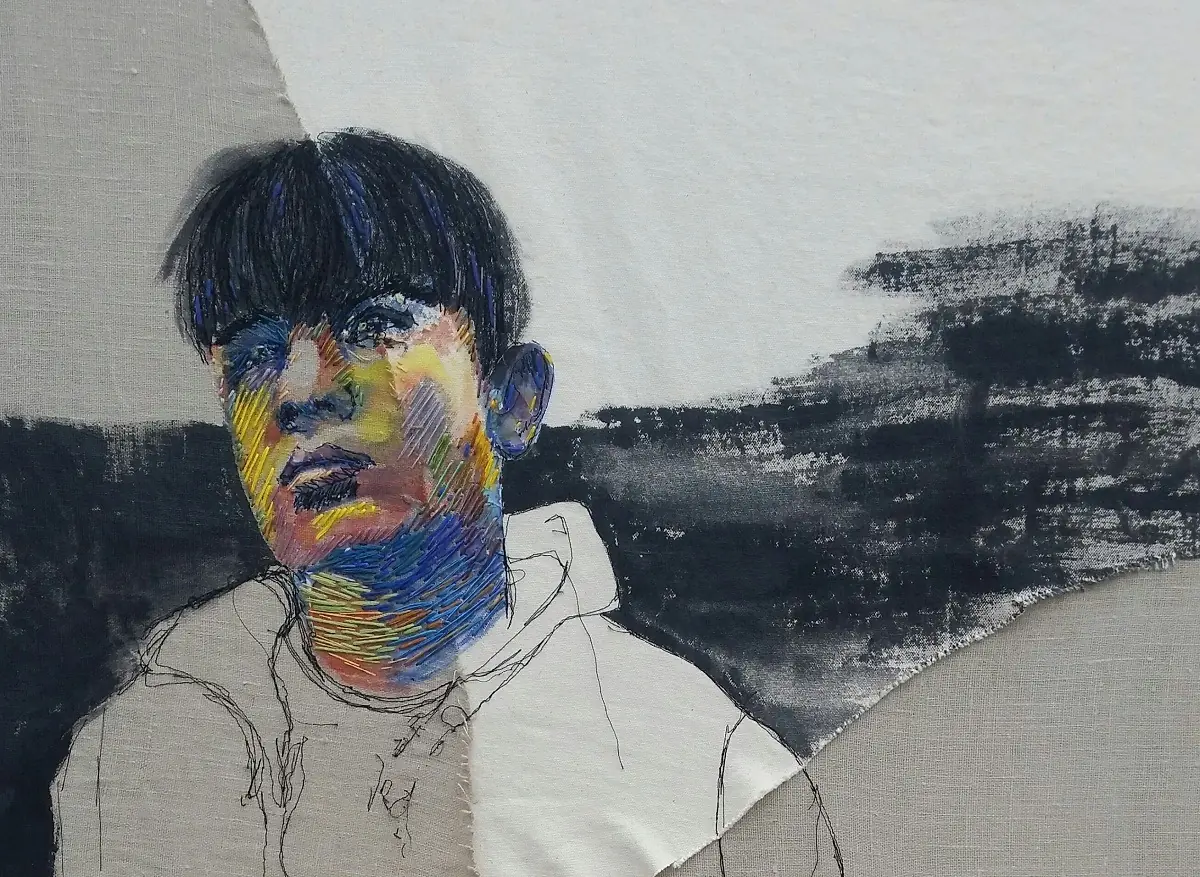
What currently inspires you?
For many years I pared my work back to the exclusive use of monotone and line. Examples include the series ‘Girls Some With Shoes On’ (International Fiber Art Biennale, 2008) and ‘Sky Drawings’ (executed on mesh and exhibited high up over windows, so the clouds and sky behind formed part of the composition). These were made for my touring exhibition with Alice Kettle (The Narrative Line, 2010, National Craft Gallery, Ireland).
After over a decade of working in monotone, I am starting to explore layers of colour!
By using colour in stitch and paint, I can further explore my obsession with form and movement in my artwork.
I enjoy achieving a sharp likeness alongside a boldness of mark while retaining personal elements of the sitter. This can be seen in my latest portraits (‘Cobalt Blue, Pink and Gold Matter’, ‘Surge’ and ‘Glow’) produced for a solo exhibition in New York, ‘Why are we’, which opened in September 2018.
My most recent portraits started out as a simple mark-making exercise using stitch, which then took on a life of their own when I added paint and heavy stitch marks. I sometimes paint over these bold stitch marks, to produce a new three-dimensional effect. This new direction in my work started with pieces like ‘Peace Comes Dropping Slow’ and ‘Sixteen Years’, which is a hybrid of my black line stitched drawings and my new paint and stitch techniques. ‘Sixteen Years’ is a 1.8m high portrait of my tall son, as he approached his mid-teen years.
At the moment I am also designing and making a range of small, sculptural contemporary jewellery in a range of materials including silver, acrylic, resin and stitch. I am pursuing an MA in Art, Research and Collaboration, at the Dún Laoghaire Institute of Art, Design and Technology, Dublin and I hope this will lead to a PhD in the exploration of materials.
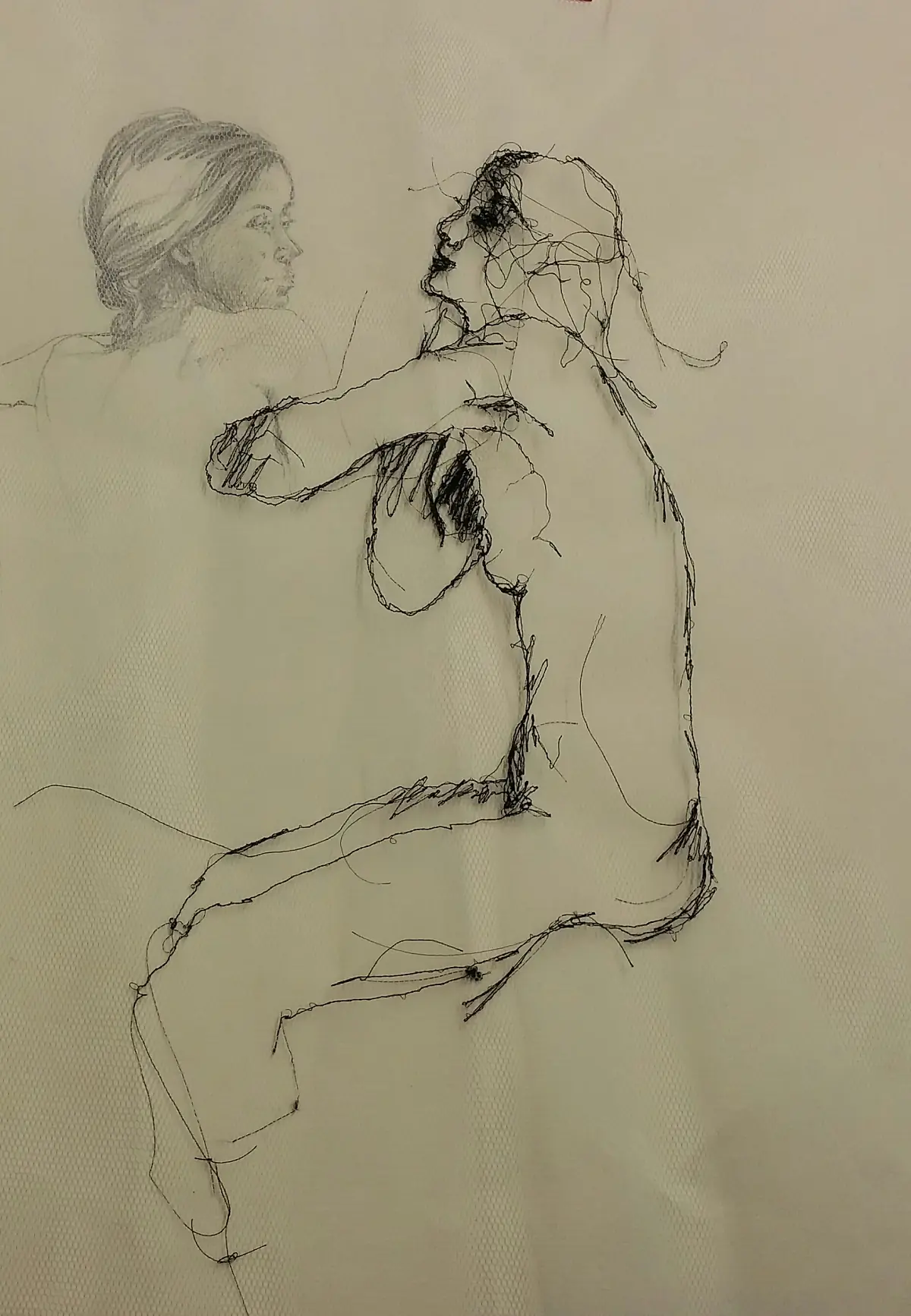
What advice would you give to an aspiring textile artist?
Don’t be constrained by labelling. The terminology ‘textile art’ can be limiting. The world can prejudge your work if it is labelled as textile art and you are using techniques from other areas of art. Don’t be afraid to use any techniques and ideas that interest you, whether they are textile related or not.
Work hard and put in the hours of practice and development. Your work will not grow unless you are willing to work at it consistently. Practice, mess up and start again. Not everything you make will be worthy, but it will be a step towards your own personal development.
I often listen to interviews about writers or musicians and their workflow. They all amount to the same process. Carve out time in your schedule, show up and do it every day. If you are lucky enough to have the time and space, there is no excuse. If you are employed in other areas, steal half an hour every day! Deciding to practice your artwork only in the summertime won’t be enough to gain real insight and make progress in your work.
The consistency of daily practice is the key to success.
Stop copying photographs or other styles – this is only acceptable for your research phase. Take your own reference photos and go to exhibitions.
Steep yourself in lots of different kinds of art, and not just the art you like. Ask yourself questions. Why is a piece in a gallery? What is it about? Carry a sketchbook to draw details of what you see and write down a few thoughts. You’ll remember it best if you draw it, even if it’s a bad drawing.
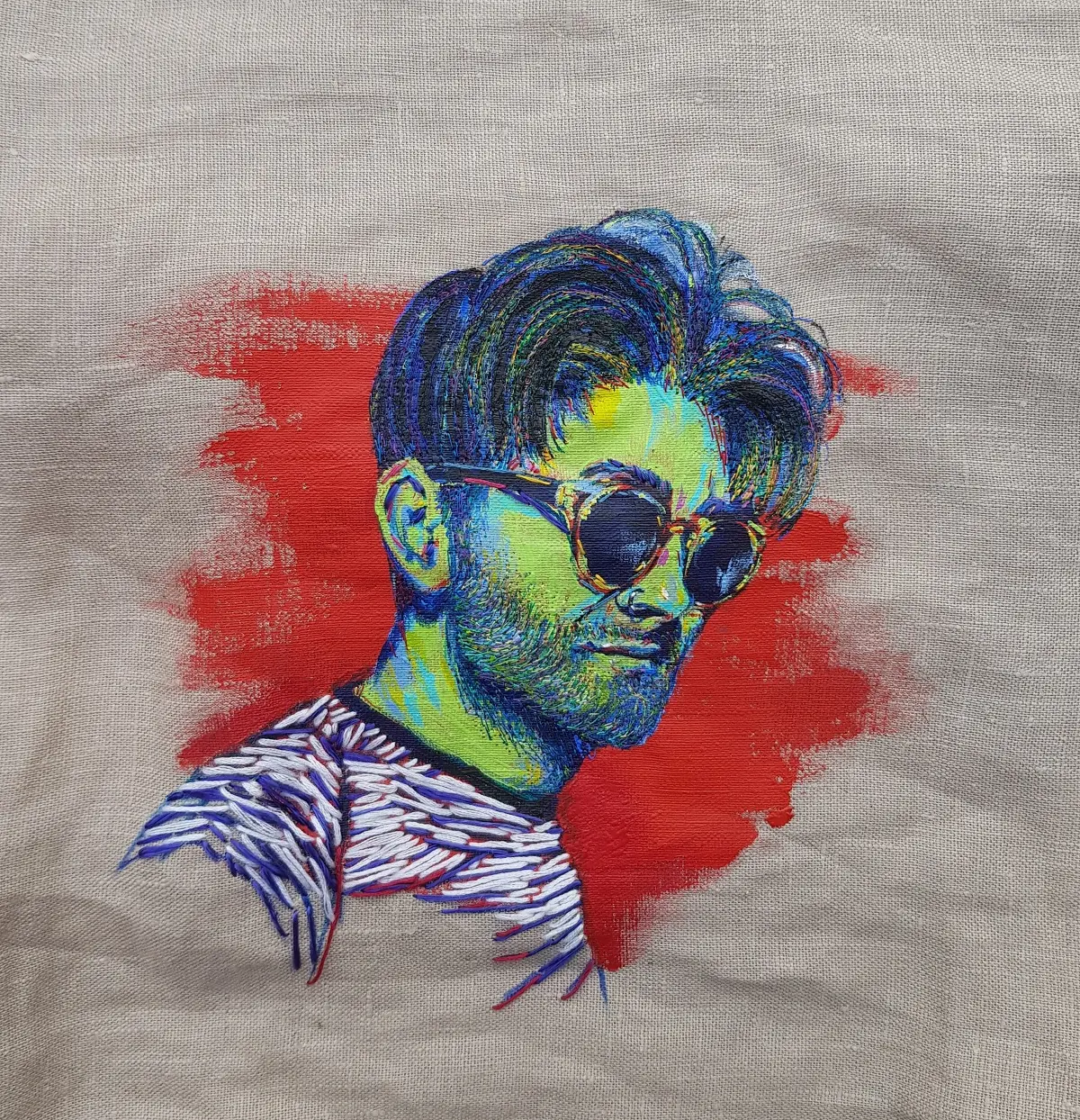
Bernie’s Recommended books:
Ways of Seeing by John Berger
Drawn to Stitch, by Gwen Hedley
Fiber Art Now, Magazine, US
The Story of Painting by Sister Wendy Beckett
For more information visit www.bernieleahy.ie or facebook – Bernie’s solo Exhibition currently in New York, “Why Are We” runs for 4 months till Dec 2018 at the Irish Arts Center
If you are inspired by Bernie’s work stitching the human figure and want to share your ideas on the subject, then let us know by leaving a comment below
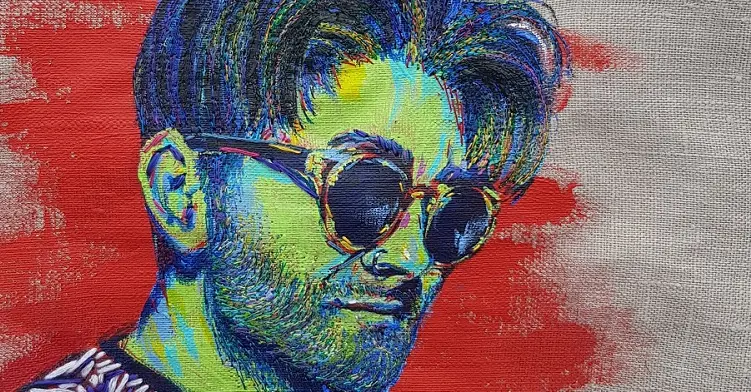

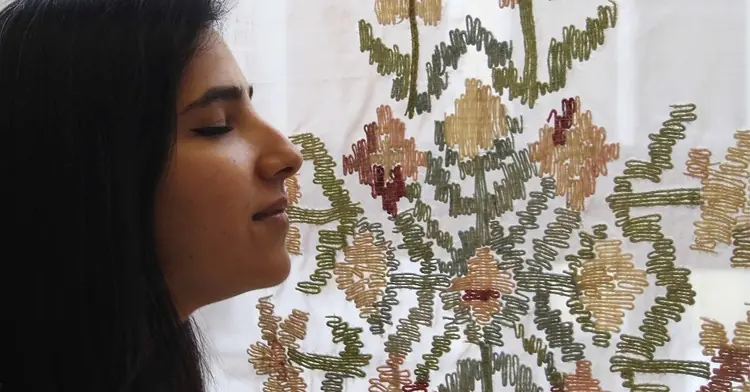
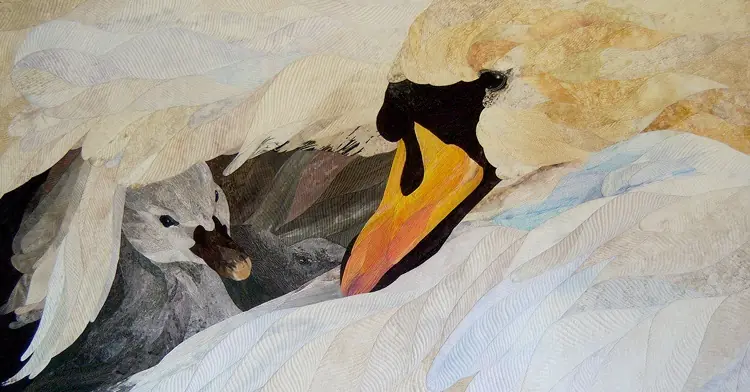
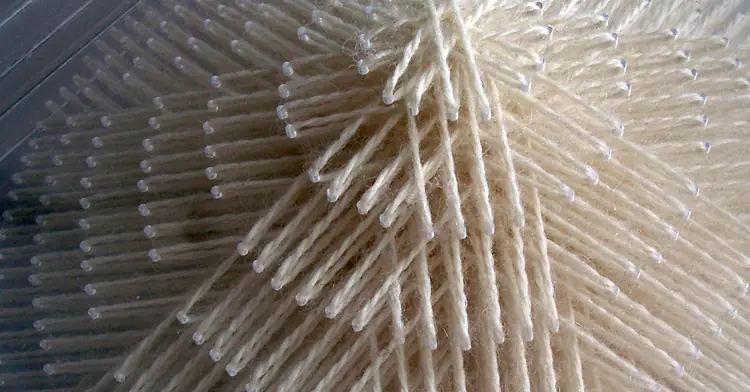
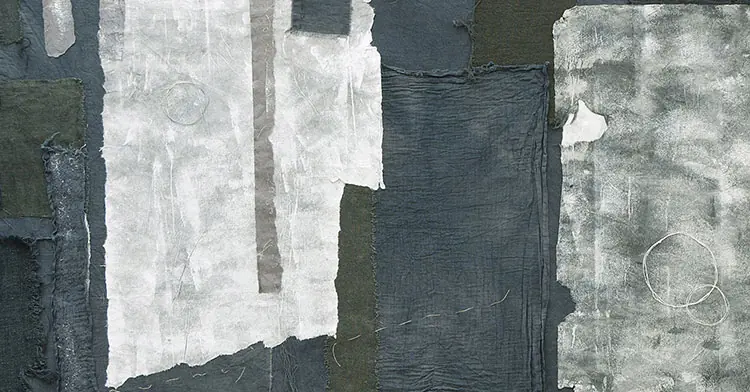
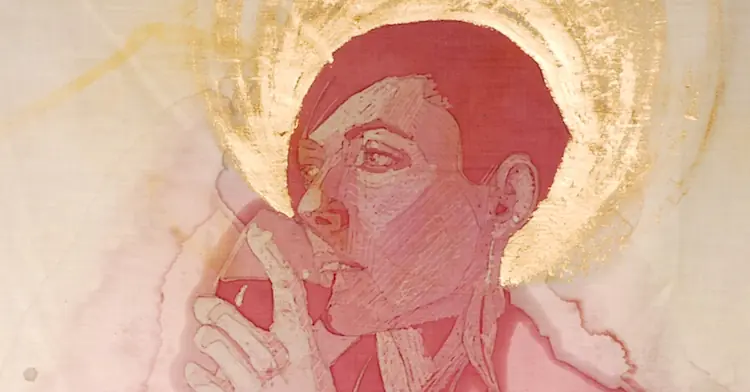
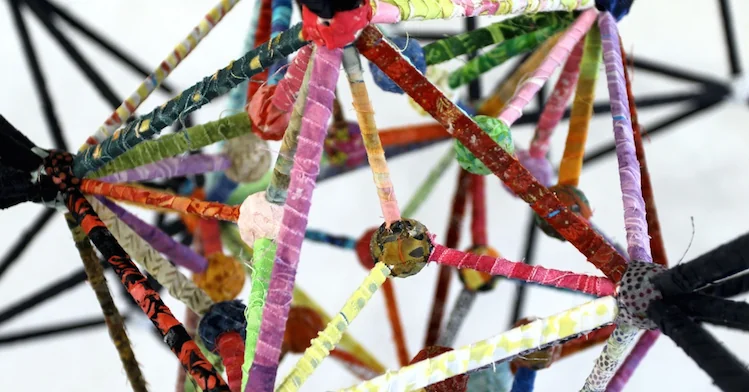
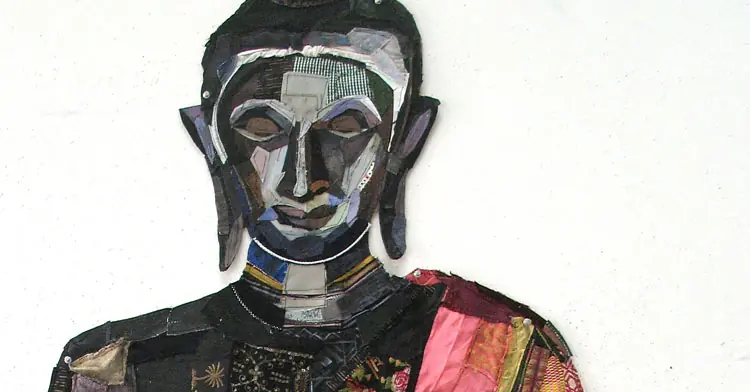
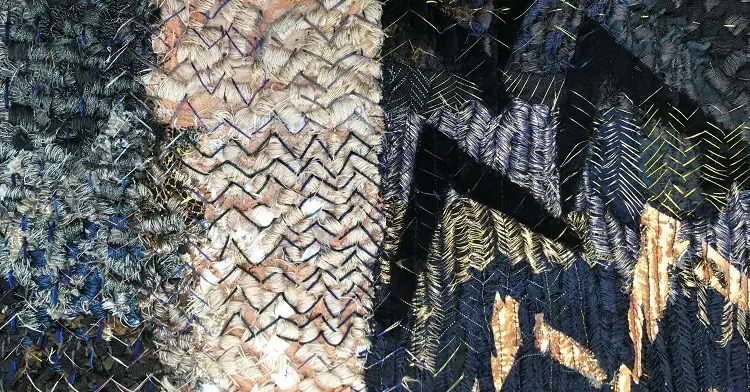
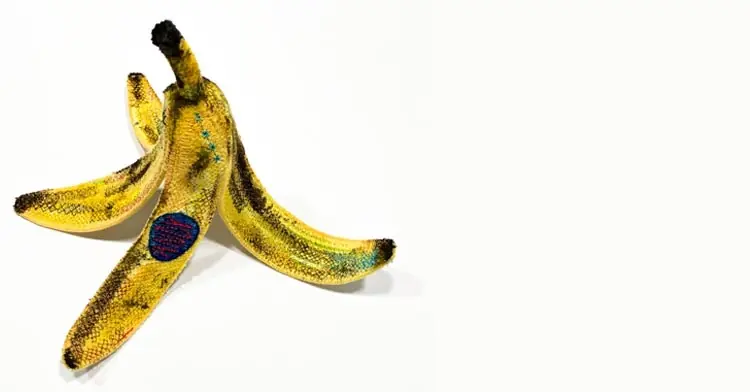
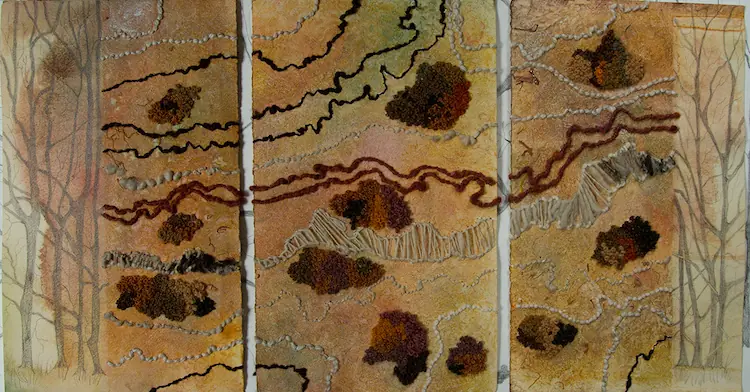
3 comments
connie Conway
Love your work and faces.
Ivonne
Wow,fantastic work and fantastic first article to receive.I am interested in what thickness canvas she uses.I love her portraits, beautiful.Thank you for the inspiration.
Mary Scharosch
Just fantastic. Wish you could exhibit on the West Coast, San Francisco’s Legion of Honor Museum.
Your work is very special and dynamic.